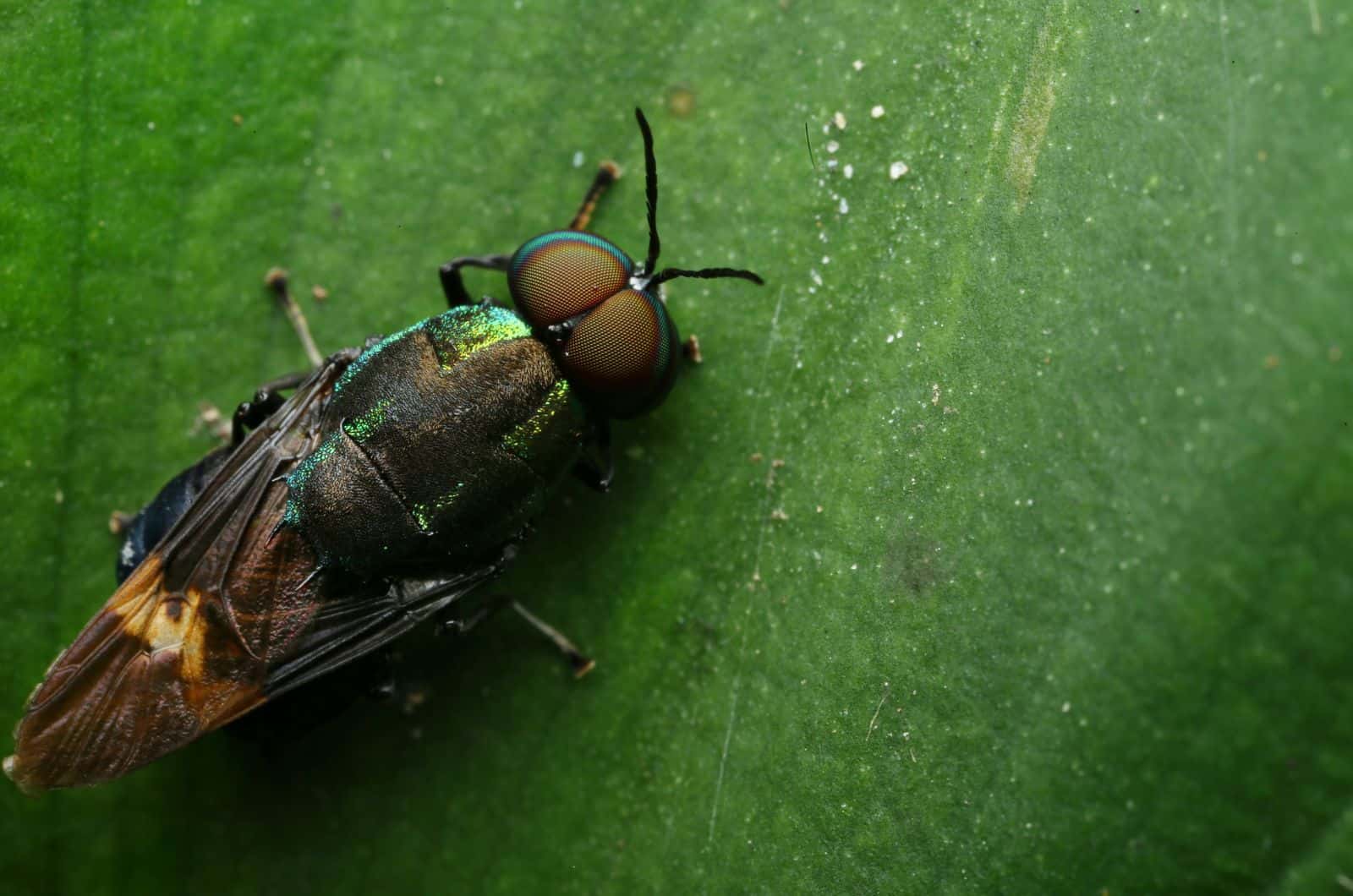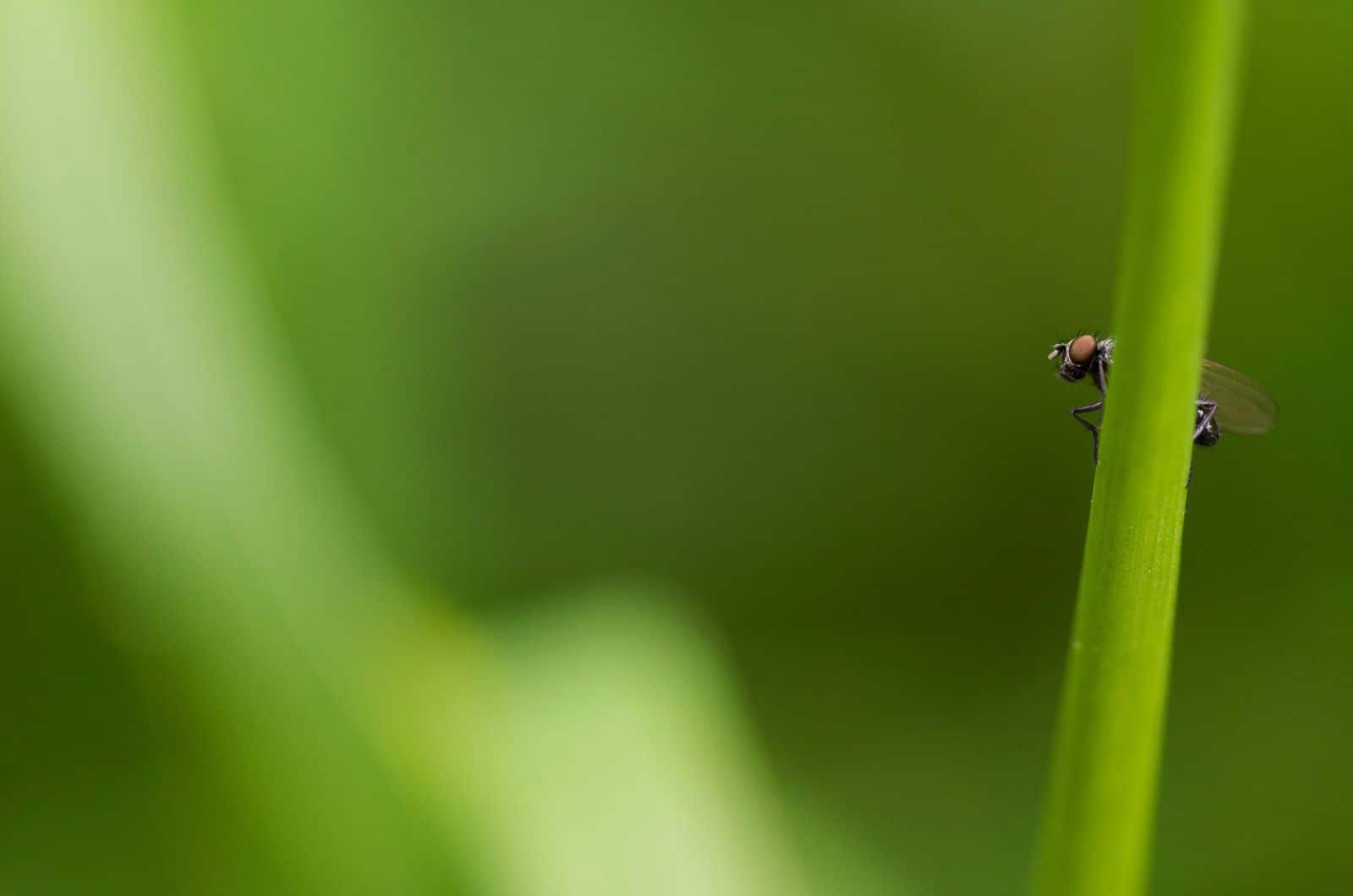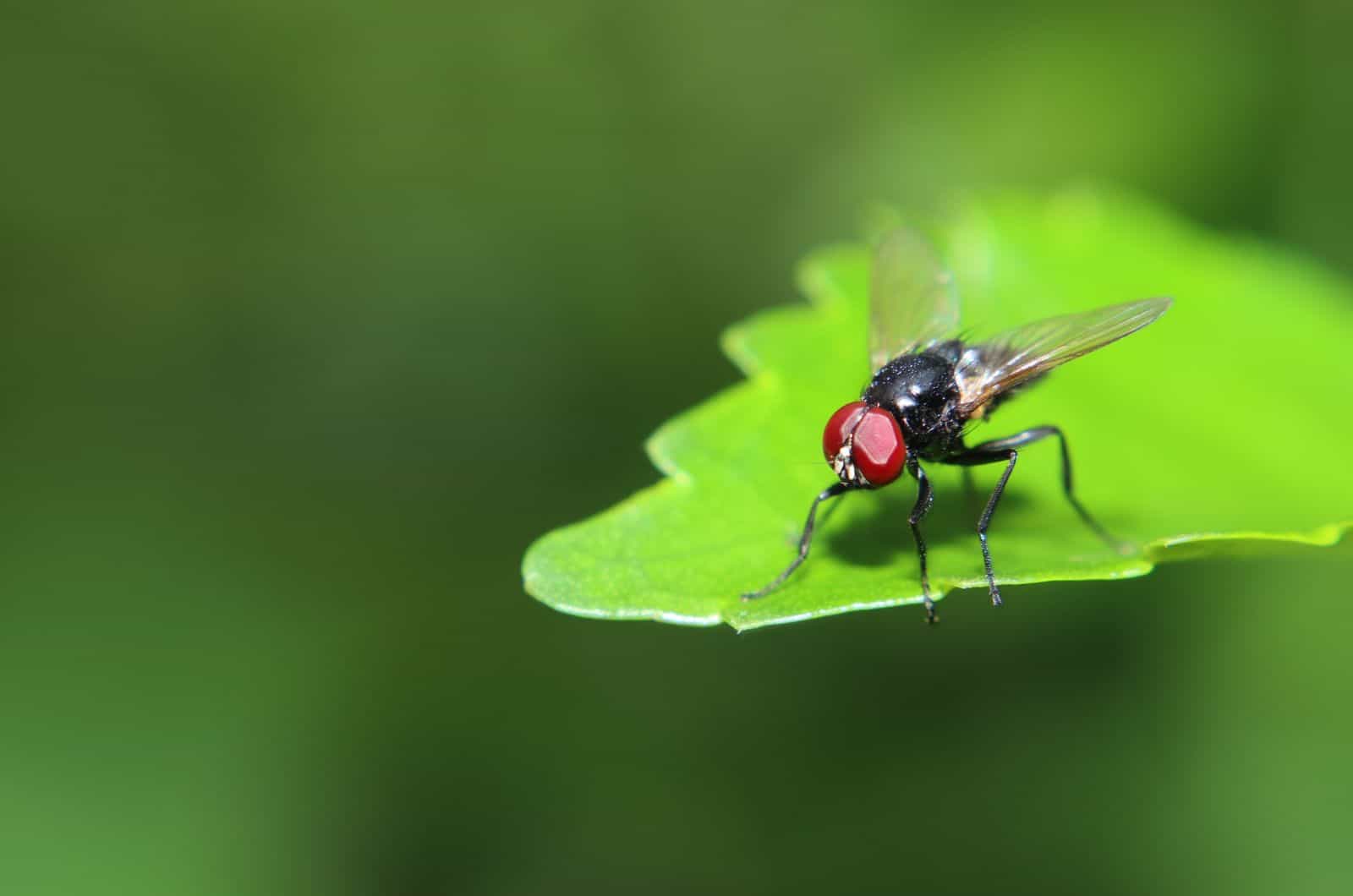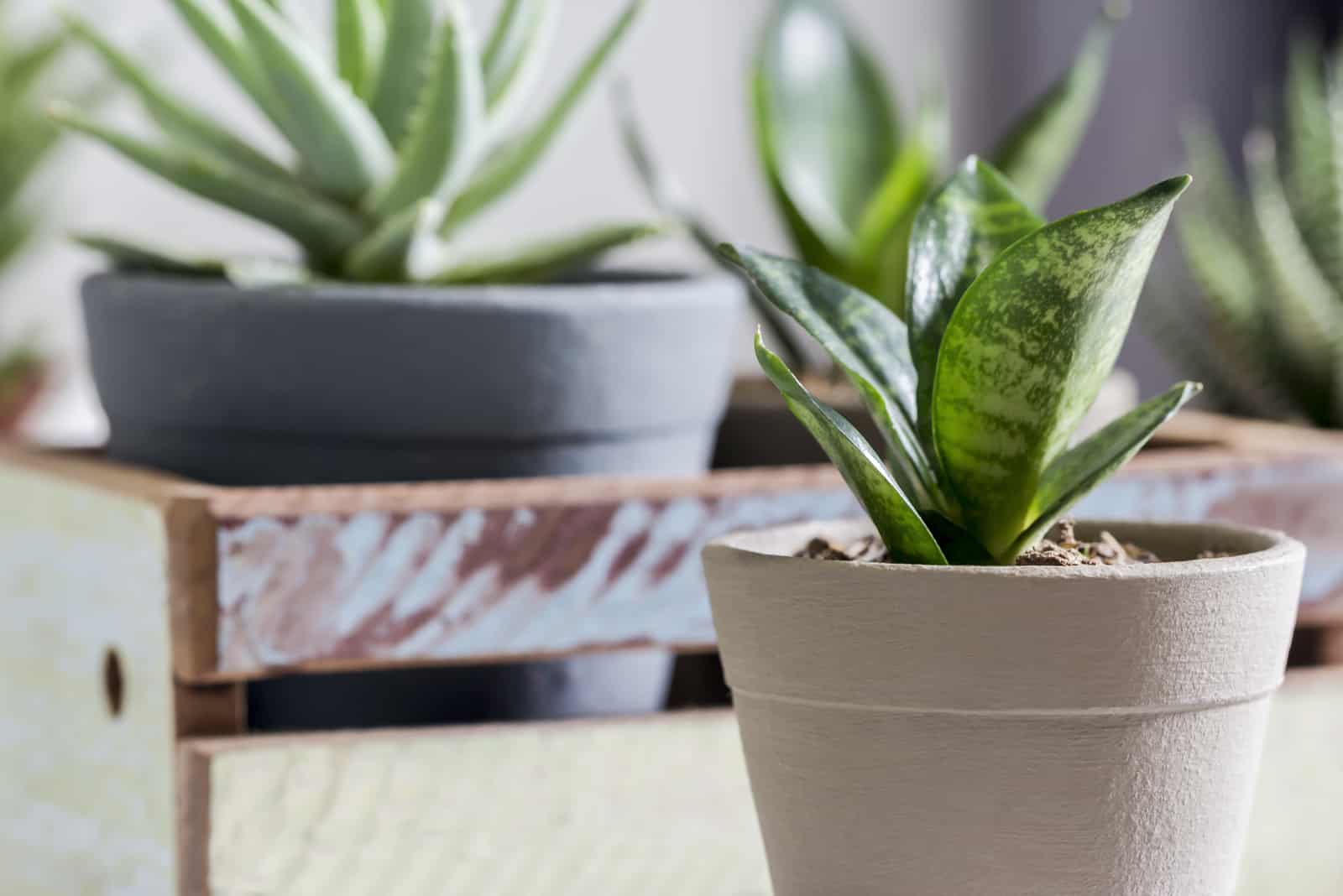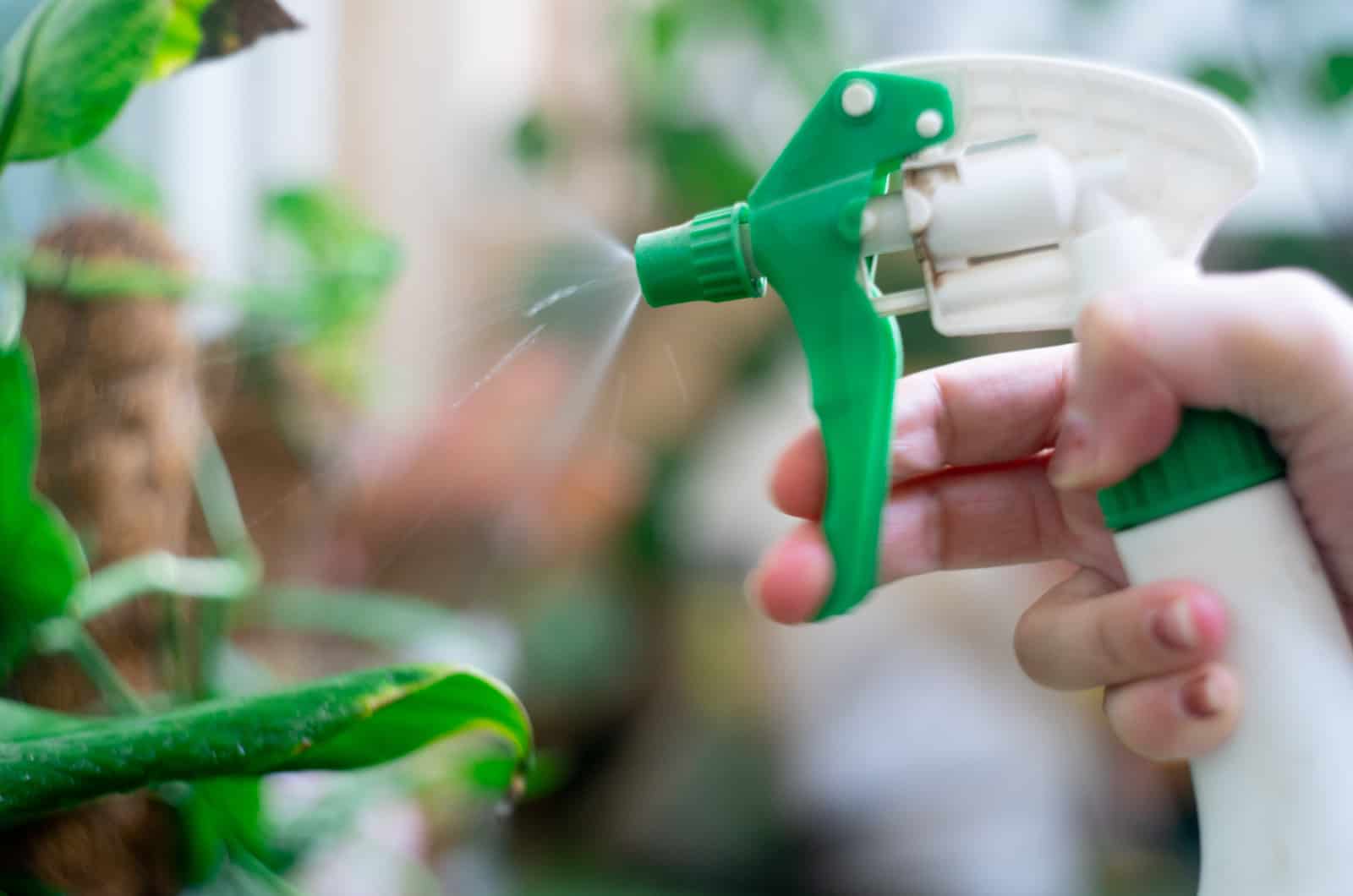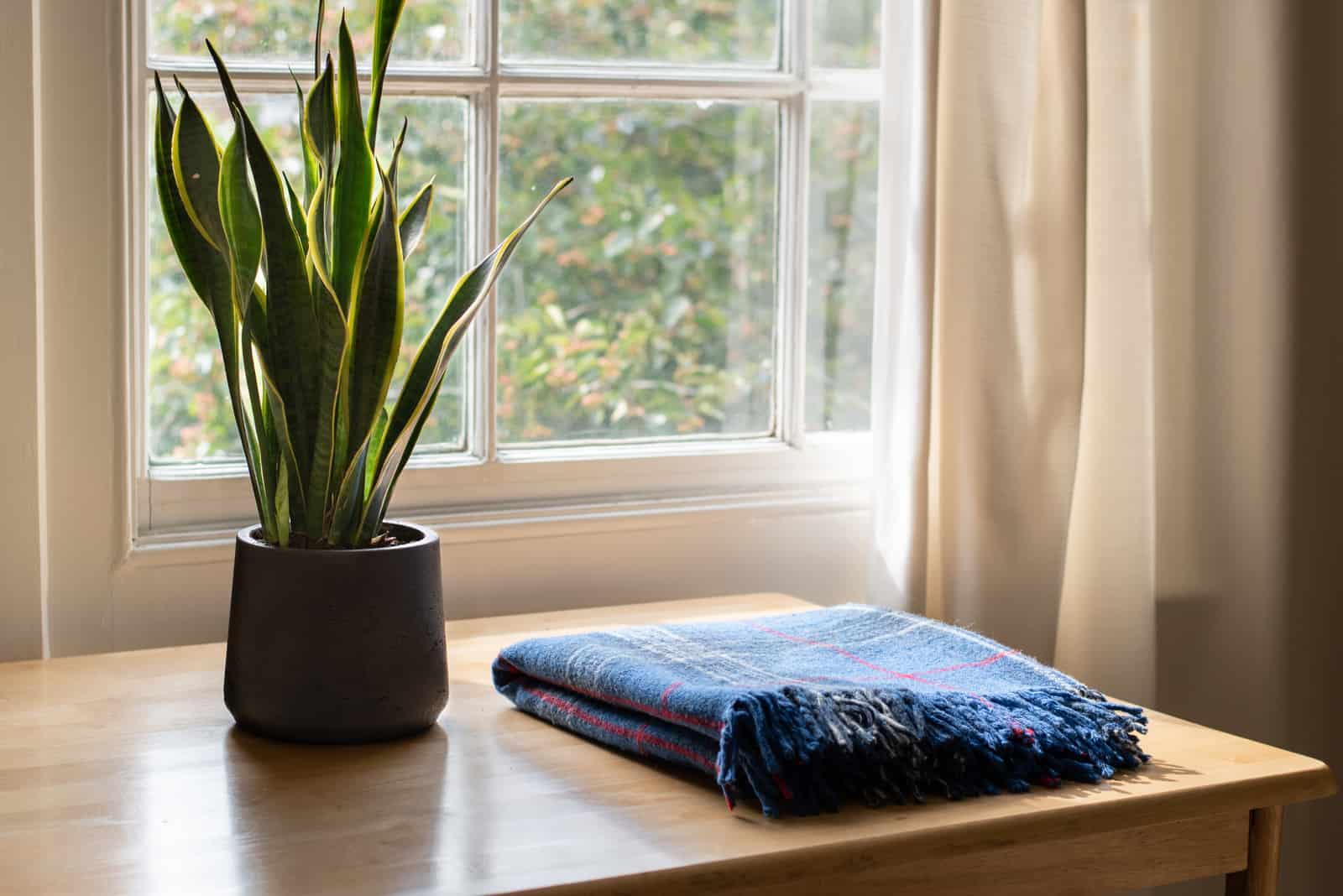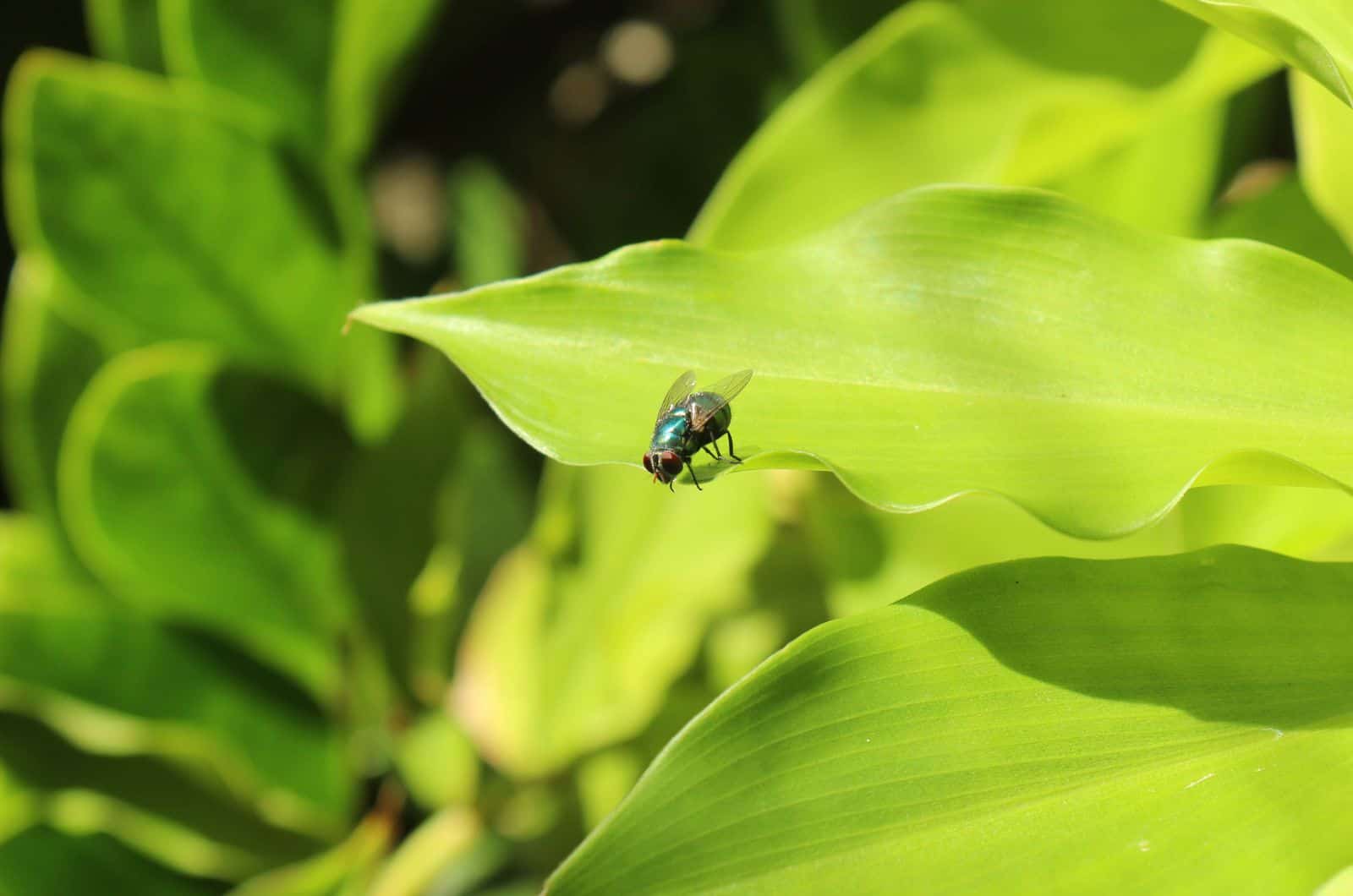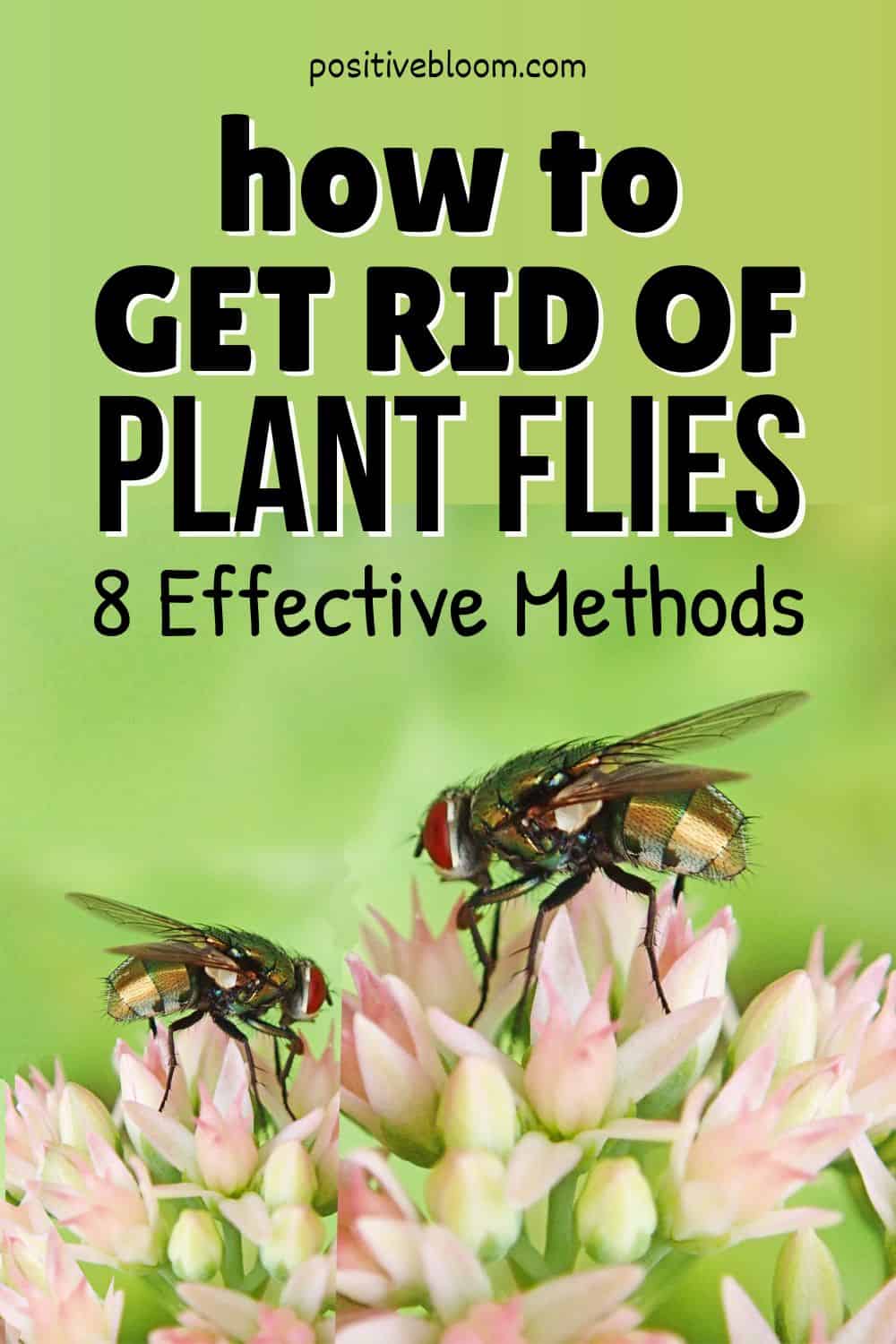One of the worst enemies of houseplants is definitely plant flies, as well as various pests and fungi that cause deadly diseases. You might have noticed small flies around your houseplants around the same size as fruit flies and similar to mosquitoes in appearance.
These little annoyances are known as fungus gnats, and if you spot any tiny flies constantly flying around your houseplants, you are probably dealing with a fungus gnat infestation.
These flies have only one goal, and that is to settle on your plant and steal its nutrients!
Luckily, they are not as harmful as other pests, and there are a few tricks you can use to prevent them from invading your plants.
If you want to find out how to get rid of plant flies, read on!
How To Get Rid Of Plant Flies
Before we dive into the methods for how to get rid of plant flies, we must learn a few things about fungus gnats first. You don’t want to expose your indoor plants to chemicals or buy gnat traps if you don’t have a fungus gnat infestation in the first place!
They look a lot like other flying insects, so it is important to be able to identify them so you can get to the bottom of your gnat problem.
What Are Fungus Gnats?
Plant flies, otherwise known as fungus gnats, affect indoor plants by contaminating soil, potting soil, organic matter, and other sources of organic decomposition. Their larvae devour roots and can also be a concern in greenhouses, nurseries, and interior plantscapes. Their larvae mostly consume fungi and organic debris in the soil.
Given that they cannot bite humans or transmit diseases, fungus gnats are perfectly safe to be around. However, as their populations grow and their larvae begin to feed on the delicate plant roots, they can become an issue for houseplants. Pythium, a family of plant diseases that causes “damping off” in seedlings, is also spread by fungus gnats.
These are not your usual pests — you cannot see them munching on plants. Sure, you can easily spot them flying around the plant, however, they are more interested in the soil and roots, which is why you will often see them on top of the soil trying to get some of that root juice!
If left untreated, they can cause serious damage to your precious little plants — especially if they are young and in the seedling stage when the roots are extremely delicate.
A fungus gnat will damage the plant in a similar way to root rot. For instance, lower leaves may drop and turn yellow, and the plant’s growth may slow down. In really bad circumstances the entire plant may begin to wilt, and if the roots are severely harmed the plant will likely deteriorate.
In this case, the only thing that can save your plant is repotting. Trim off any brown or decaying roots, and make sure to put it in a new potting mix and container!
Fungus Gnats Life Cycle
Even though these tiny flies only live for a week, they can cause serious damage to your plant’s health because they are able to lay about 300 eggs in that short period of time!
Fungus gnats go through four stages in their lifetime:
• Fungus gnat eggs
• Fungus gnat larvae
• Fungus gnat pupa
• Adult fungus gnat
The tiny eggs and oblong pupae are found in organic and damp soil, which is where females lay eggs and where the larvae feed. Eggs hatch in about 3 days in temperatures of around 75 degrees Fahrenheit. The larval stage takes about 10 days to transform into pupae, and adults develop in about 4 days.
Depending on the temperature, a generation of fungus gnats can be produced in around 17 days. They will grow more quickly and produce more generations per year as the temperature rises.
How To Identify Fungus Gnats
It’s important to be able to identify fungus gnats, especially because they look identical to drain, fruit, and phorid flies. In case you didn’t know, drain flies are those little insects that fly around drains, septic tanks, and sewers, hence the name. They are similar to phorid flies, which also like to hang out around sewers and garbage.
There are a few methods you can use to distinguish fungus gnats from other files, including looking at their size, activity, and appearance.
Activity
These little creatures are attracted to lights, so you might initially spot them around windows and plants on windowsills. However, they are quite poor flyers, and typically don’t move around much indoors in contrast to more active species like the common housefly.
Although they can occasionally be spotted buzzing around the outside of pots or close to drainage holes, fungus gnats typically spend the majority of their time on the soil surface of potted plants. They have a tendency to wander along the ground and only take off briefly because they are not good at flying. They fly more like mosquitoes than fruit flies in terms of their irregular flight and sluggish speed.
Size
Pests are usually very small, and even these flies are so tiny that you can barely see them!
They are around the same size as a fruit fly, measuring between 1.5 to 3 mm (1/16 to 1/8 of an inch). The larvae of fungus gnats can grow to a length of 1/8 of an inch.
Appearance
The Orfelia and Bradysia species of fungus gnats, often known as dark-winged fungus gnats (Sciaridae), are small, delicate-looking insects that resemble mosquitoes in appearance. Fungus gnats have segmented antennae that are longer than their heads and thin legs. They can be distinguished from other flies by their long antennas because other flies usually have shorter antennas that resemble bristles.
Despite being much, much smaller in size, they still look quite similar to mosquitoes due to their elongated legs and antennas. Compared to a fruit fly, fungus gnats have a slimmer body with larger legs and antennae.
The bodies of larvae are either white or transparent, with a small, black head. If the environment is particularly damp and there are lots of fungus gnats, larvae may produce slime trails on the surface of the medium that resemble those of snails and slugs.
What Attracts Fungus Gnats?
Have you ever wondered what attracts these little creatures in the first place? You don’t usually see them that often, but rather at a specific time. Well, they are primarily attracted to moist soil — and not the kind that most tropical plants like Hawaiian Pothos prefer, but the soggy kind that is caused by overwatering.
It is quite easy to overwater plants because we often think that they need lots of water, but in reality they only need a few inches per week (my cacti plants have turned black because of overwatering!).
There are other factors that can contribute to overwatering, such as high humidity and temperatures. Most plants absorb moisture from the air, and when the humidity is higher than usual they will get too much moisture if you keep watering them.
Pot material can also affect watering because non-porous materials like plastic and metal tend to retain moisture, whereas porous materials have tiny pores that allow airflow and water evaporation.
As well as wet soil, plant flies are also attracted to organic debris. If you keep fertilizing your plants to boost the organic matter in the soil, then female plant flies will most likely lay eggs in the top layer of soil.
That’s why you should always be on the lookout for plant flies right after fertilization.
You might already know this, but these flying annoyances are also attracted to light.
Read also: How To Choose The Best Pot For Cactus Plants: All You Need To Know
8 Ways To Get Rid Of Plant Flies
Even though these little creatures multiply in the soil at quite a quick pace, getting rid of them in their different life stages is quite easy. However, if they multiply for long periods of time, it will be trickier to get rid of them — in this case, repotting is the only solution.
But even when you repot them, it may seem like they’re following your new plants around.
Luckily, there are a few tricks that you can use to easily get rid of these pests.
Keep reading to find out more.
1. Use Fly Traps
There are a lot of options you can choose from when it comes to fly traps — you can either go with the most common, the yellow sticky trap, or maybe try a DIY version that you’ve seen online!
Let’s look at some of these options more closely.
Yellow Sticky Traps
I’m sure you have probably seen these before, especially if you go to the countryside during summer where there are plenty of flies that find a way indoors.
The easiest way to get rid of them is with yellow sticky traps. They are non-toxic and won’t cause you any harm. However, they are a nightmare for flies because they stick to them and cannot get away.
You can either put them next to the affected plant or directly in the soil to catch them in the act. I would suggest you change the traps every three days to intercept the egg-laying process.
Though they might not be a pretty decoration indoors, applying yellow sticky traps will definitely help you get rid of these pests!
Vinegar Traps
Making vinegar traps is a do-it-yourself gardening practice (though that is the essence of gardening). This is quite an easy and efficient trap — it won’t take much time to make, and your plant will be fly-free in no time!
All you have to do is fill a shallow container with white vinegar and add a few drops of dish soap. Then place this container next to the affected plant — repeat this process until all the gnats are gone!
You can also mix apple cider vinegar with beer or fruit juice and add a few drops of dish soap as well. You could also add a banana or some other piece of fruit to speed up the process. That piece of fruit will rise on top of the liquid, which will attract flies even faster. Cover the top of the glass or container with plastic wrap, poke some holes with the toothpick, and voila — your trap is complete!
Potato Traps
If you have a couple of potatoes lying around the kitchen, you can use them to help you with your plant fly infestation. All you have to do is cut the potato in half and put it on the soil (make sure to put the fleshy part on the soil).
The moisture from the potatoes will attract fungus gnats, so you will also have to make sure that the potato doesn’t dry out because otherwise the trap won’t work!
Fruit Trap
If you have a piece of overripe fruit, you can use it to trap these annoying flies. All you have to do is put the overripe fruit in a bowl then cover it with some plastic wrap and poke holes in it.
The flies are going to buzz down to get to the fruit, though they won’t make their way back out!
Wine Trap
This is the trap that I’ve never made because you have to use leftover wine, and I always drink all of it! Simply put a bottle with some red wine in the bottom near the kitchen drain and the alcohol will attract gnats. They won’t be able to escape the bottle.
Flycatcher
Unfortunately, I spend most of my summers hanging up flycatchers instead of dreamcatchers. A flycatcher is an indoor fly-catching device that can easily catch these little pests. They are typically USB-powered and can be purchased locally or on Amazon. The fans and LED lights attract the gnats, which are killed by the trap.
2. Let The Soil Dry Out
We already mentioned that these plant flies are mostly attracted to moist soil, which is where the female plant flies lay their eggs. So all you have to do in order to get rid of plant flies is skip a couple of watering sessions and let the soil completely dry out.
Dry soil is not suitable for fungus gnats, and they will most likely die off in a couple of days.
You don’t have to worry about your plants because most houseplants can tolerate a little bit of a dry spell. Just make sure to continue with a regular water regimen as soon as you get rid of the fungus gnats!
Also make sure that you remove any excess water from the bottom because there can still be some moisture retained there.
3. Add Gravel
Even though we mostly use gravel for patios, there are still numerous ways that you can use this material to improve gardening. For instance, getting rid of plant flies!
As we know that fungus gnats love hanging out in the top few inches of soil, the best way to prevent their larvae from climbing up is by spreading aquarium gravel or coarse sand over the soil surface.
This will trap the little larvae underneath the surface and kill them in a matter of days.
So, not only will gravel help you get rid of plant flies, but it will also make your plant look prettier – especially if you use decorative gravel!
4. Introduce Fungus Gnats Predators
Another fun option is to buy fungus gnats predators to eat these little creatures. You can consider nematodes, for example.
Nematodes are tiny little bugs that look similar to worms, though they might often be hard to see with the naked eye. These tiny bugs look for gnats in their larval stage, penetrate them, and release bacteria that eat them from the inside out.
Another way to get rid of these annoyances is by introducing a bacterium called Bacillus thuringiensis var. Israelensis, which also kills gnats in their larval stage.
Carefully follow the instructions on the packaging and make sure to wear protection to avoid contamination. This bacterium will coat the plant’s roots without harming them and kill any fungus gnat that tries to eat them.
5. Apply Pesticides
Even though growers nowadays tend to use more natural ways to get rid of pests and fungi, the most efficient methods of pest control are definitely pesticides and insecticide sprays.
There are so many options available, and you can pick and choose from pesticides that can destroy the pests in their larval or adult stage, or more natural ones that get rid of pests either way.
If you use a pesticide that is strictly intended for one life stage, make sure that you use it only when the pests are at that certain life stage.
I usually use neem oil as a natural pesticide. You can dilute neem oil with water and pour it in a spray bottle. If you spray the soil, it will kill fungus gnats in their larval stage. You can also spray adult fungus gnats, and they will probably die off once they come into contact with the mixture.
You can also use hydrogen peroxide to destroy these little creatures. Combine one part hydrogen peroxide with four parts water and apply the mixture to the soil.
6. Use A Spray Bottle
You can mix dish soap and water, pour it in a spray bottle, then use it regularly to get rid of plant flies. You can also use an insecticidal soap that is safe for indoor use.
Simply spray some of the mixture on the top layer of the soil and repeat this process until all the gnats are gone!
7. Repotting
Repotting the plant in a new pot with fresh soil is a great solution because there will be no fungus gnats eggs to develop into larvas and adult gnats. All you have to do is buy a new pot or sanitize the old one. Definitely buy a new potting mix for your plant.
Be delicate when repotting because you can easily harm the plant’s roots.
8. Mosquito Dunks For Outdoor Plants
You can use mosquito dunks to get rid of gnats in outdoor plants, just make sure that you use the kind that is safe for pets and humans. Drop the dunk in a watering can and let it sit for a while so that the insect-killing bacteria gets released.
Then simply pour that water onto the soil of your outdoor plants. Repeat this process for several weeks to make sure that all eggs and larvas are gone.
You can also use low-voltage lights in your garden to avoid attracting plant flies.
How To Prevent Plant Fly Infestation
Prevention is the best cure when it comes to gardening.
This is especially true when it comes to plant flies. We can’t control things that are naturally occurring, but there are a few tricks that you can use to prevent these small creatures from invading your home and your plants.
Find The Perfect Watering Schedule
Overwatering is the source of many issues. Yellowing of the leaves, root rot, soggy soil attracting various pests and fungi… all of these issues can be avoided by simply giving your plant the right amount of water.
To be honest, it’s hard to find the perfect watering schedule for plants because many factors affect watering needs, like humidity and temperature. You can’t use the same watering schedule for all plants because they probably have different watering requirements.
Checking the soil before watering is the best method for the majority of plants — simply stick your finger in the soil and see if the top few inches of soil are dry. If so, then water the plants. If not, postpone the watering session for a couple of days.
When I bought my first Pothos plant, I was constantly watering it, and it ended up wilting in a matter of weeks. I was so worried about what went wrong that it didn’t even occur to me that I was dealing with an overwatered Pothos!
Another thing that I have learned on my gardening journey is bottom watering.
Bottom watering is a great way to keep the soil moist — you just put the pot with drainage holes in the water and let it sit for a while. The water will be absorbed through the drainage holes and be evenly distributed.
This way there won’t be any moisture in the top layers of the soil where fungus gnats usually settle, so they won’t be attracted to the plant.
Provide Proper Drainage
Proper drainage is crucial if you want to avoid overwatering.
The first thing on the agenda is buying pots with drainage holes in the bottom. Excess water will simply drain through the holes, so there won’t be any excess left in the soil.
However, I would also suggest you put some kind of barrier on the drainage holes because fungus gnats tend to crawl into holes and lay eggs there. I usually put a coffee filter on the pot. Putting a filter on the pot will prevent the soil from spilling out.
The second important thing is using well-draining and porous soil. This way there won’t be any excess water retention and the soil will simply drain out of the drainage holes.
Inspect The Plants
Before you buy a new plant or bring one indoors, make sure to examine it carefully to see if there are any signs of fungus gnats infestation or any other kind of pest infestation.
If the plant is affected, you will prevent the pests from spreading to the rest of your plants.
Keep Your Space Clean
Flies like to hang out around messy and smelly areas such as sewers, drains, garbage, and so on.
Put food away after eating, clean the garbage can, sanitize the drains, don’t let fruit rot in the fruit bowl, and clean damp areas where gnats like to be such as compost piles and leaf piles.
You should clean your pet’s bowls regularly and never let their food stay out for a long period of time. Regularly change the water in fountains and birdbaths.
These are just some of the things that you should be mindful of, though I think that we should always strive to keep our places nice and tidy!
Frequently Asked Questions
1. How do you get rid of little flies in house plants?
There are numerous options for getting rid of little flies in houseplants. For instance, you can set traps (store-bought or homemade) on the soil or near the affected plant.
You can also let the soil dry out because flies like moist soil. Putting gravel on the soil surface to prevent larvae also works.
Another thing that you can do is apply pesticides or introduce predators.
2. Why do I have little flies in my house plants?
Little flies are attracted to moist soil rich in organic matter. If you keep overwatering your plants, the soggy soil will attract lots of harmful pests that can seriously damage them.
These little flies are also attracted to light, and some types are attracted to drains and sewers, some to fruits, and others to house plants (like fungus gnats!).
3. What are plant flies?
Plant flies, otherwise known as fungus gnats, are tiny little creatures that settle in plant soil and munch on the roots. They are usually attracted to moist soil that is rich in organic matter. They can be found in houseplants, greenhouses, gardens, and so on.
Though they are not as harmful as other pests, they can cause your plants harm like yellowing of the leaves and wilting (similar to root rot).
Don’t worry because plant flies won’t cause you any harm, other than constantly annoying you!
To Sum Up
If you were wondering how to get rid of plant flies, I hope this article has given you some useful tips that you can use to get rid of these annoyances!
Luckily, plant flies won’t permanently damage your plant or cause you any harm. However, your plant definitely won’t be impressed with bugs flying around its leaves and laying eggs in the soil.
So, you should definitely use some of the tips in this article to prevent them from infesting your plants in the first place — just keep your place nice and tidy and always make sure that your plant gets just enough water!
I hope this article was helpful.
Until next time!
Like this post? Share or pin it for later!


